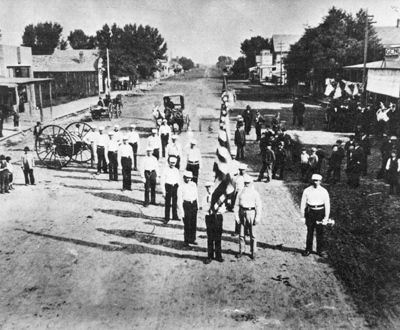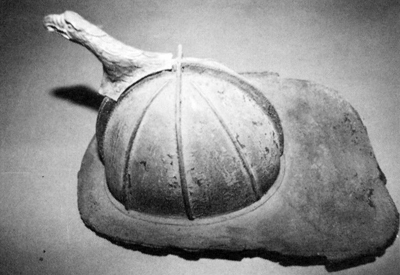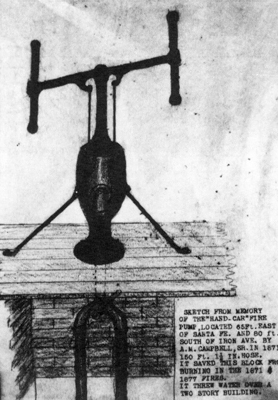Salina's First Firefighters
Who were Salina's first firefighters? They constituted a cross-section of town and included A.W. Stevenson, a storage company owner; Charles, Fred and George Kastner, tinners and blacksmiths; Charles Hanley, mattress and awning company owner; Bill Young, the butcher; and Ike Zerbe, a building engineer. If needed, everyone was a firefighter.

In the beginning, the firefighters were loosely organized. The citizens elected a Fire Chief. The fire chiefs' job was to direct the rest of the citizens when there was a fire. The first Fire Chief was Charles Fleck, a jewelry shop owner.

The first means of fighting fires was the bucket brigade. People formed a line from the fire to a water source and passed buckets to the fire. This system was slow, required a great number of people and was generally not very effective. Alexander Campbell (one of Salina's founders) recognized early on the need for an improved means of fire protection. In 1871, he installed a handcar pump near Santa Fe and Iron. Legend has it that the 150 feet of 1 1/2 hose attached to this pump would throw water over a two-story building.

Who were Salina's first firefighters? They constituted a cross-section of town and included A.W. Stevenson, a storage company owner; Charles, Fred and George Kastner, tinners and blacksmiths; Charles Hanley, mattress and awning company owner; Bill Young, the butcher; and Ike Zerbe, a building engineer. If needed, everyone was a firefighter.

In the beginning, the firefighters were loosely organized. The citizens elected a Fire Chief. The fire chiefs' job was to direct the rest of the citizens when there was a fire. The first Fire Chief was Charles Fleck, a jewelry shop owner.

The first means of fighting fires was the bucket brigade. People formed a line from the fire to a water source and passed buckets to the fire. This system was slow, required a great number of people and was generally not very effective. Alexander Campbell (one of Salina's founders) recognized early on the need for an improved means of fire protection. In 1871, he installed a handcar pump near Santa Fe and Iron. Legend has it that the 150 feet of 1 1/2 hose attached to this pump would throw water over a two-story building.
